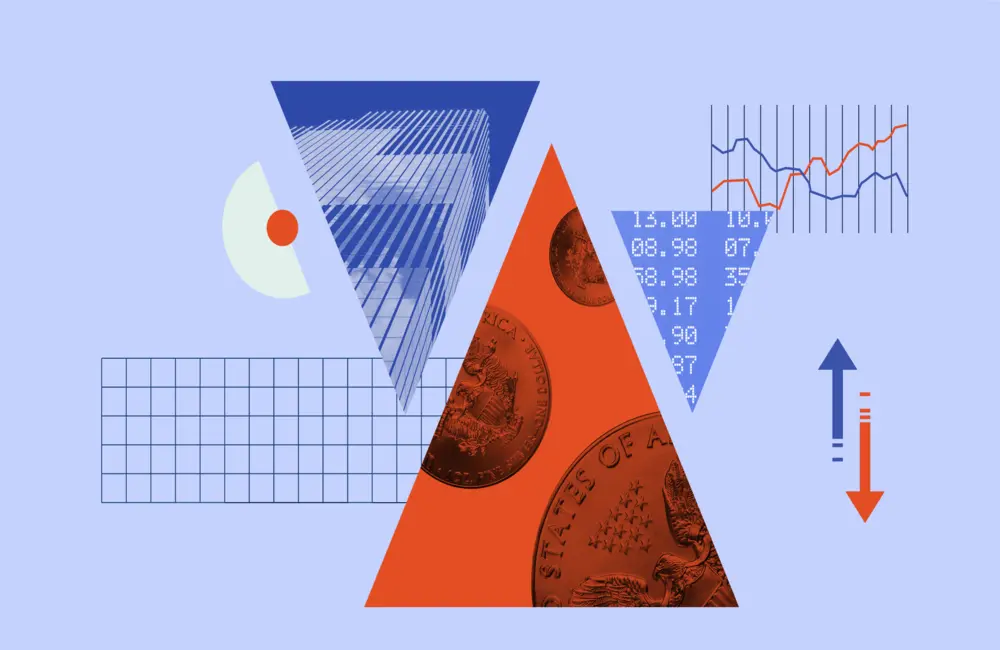Talk of recession is increasing globally. Red-hot inflation and consecutive interest rate hikes from the US Federal Reserve and other central banks (including the Reserve Bank) have placed a heavy hand on the capital markets.
Lightenheiser, head of Asia multi-asset investments at Schroders, has the data to back up the idea that we are not far from having an above-average probability of the US economy slipping into recession. Her model confirmed 20 signs that monitor inflationary, monetary and short-term macro and financial markets patterns.
“As of late April, nine of those indicators are flashing recession flags. Two-thirds of the inflationary measures which are early recession warning barometers show recession risks. The monetary variables are the key to watch over the coming few months as the Fed tightens monetary policy,” she observes.
What are the immediate dangers of a recession?
Inflation indicators lead more, so recession is normally more than 12 months before actually hitting. Kondo says historically, whenever recessionary indicators were at some point above the 45% threshold, a recessionary risk becomes imminent. We have been in this position — where at least 45 percent of the indicators say the economy is in a recession when at least 45 percent of the indicators say the economy is in a recession seven times in the last 32 years, and five of those times we were still in a recession or getting ready for one.
“If we think in scenarios both of us find it very hard to come up with events that fall in the ‘reflationary’ and the ‘productivity boost’ brackets.” Moody’s analysis shows that supply-side inflation, downside in the Russia-Ukraine war, rolling lockdowns in China and a consumer recession could have ‘stagflationary’ or ‘deflationary’ outcomes.
But is Asia immune to US recession?
Adding to this, a spillover of recessionary risks from the US and Europe to the rest of the world also appears all but inevitable. Trade-heavy South Korea and Taiwan would be among the Asian economies that could be more vulnerable to these risks. However, portfolio managers are optimistic that much of Asia will emerge in better shape.
When assessing the wider Asian economy, Thomas Poullaouec, head of APAC multi-asset solutions at T. Rowe Price, takes into account a larger role for China. “Asia is so sensitive to China, where we are not discussing rate hikes but yet further policy loosening and support.” The country “is likely one of the first global economies to reaccelerate, post the downturn which could hold the effect of slowdown, emerging Asia.”
Which leads to the question is China a hedge?
Can China serve as a hedge?
Schroders’ Kondo and Matt Wacher, chief investment officer, Asia Pacific at Investment Management, share the view that China tech is due for a turnaround.
After deep corrections over the past couple of years, Wacher, who is based in Sydney, finds the sector attractive due to the valuations and margin of safety available there. “There’s a sensible place for China tech in our portfolio. And as some of the regulatory risk diminishes, we would likely add to that position,” he says. All that is holding him back from accumulating more in China tech, to be honest, is the crossing of the wires between the regulations; whether it is local regulations at home, or the international ones on the other end of the world where, while speaking of China tech, US regulators are going after the non-compliant Chinese ADRs listing on US exchanges, as a case in point.
“If a bit more clarity were to come on some of those things, we would certainly see the sector as a good opportunity,” he added. Alibaba (BABA) and the likes of Tencent (TCHEY) are quite China-focused. They provide the rest of the portfolio with exposure that has different drivers, so we think those stocks are quite insulated from a U.S. recession.”
Kondo, who oversees the Bronze-rated Schroder China Asset Income fund and Neutral-rated Asian Asset Income Fund, believes China is one market in the world where the firm won’t be afraid to own more growth stocks. The drivers of a correction in China's stock market had little to do with US media bemoaning higher interest rates or policy initiatives. There may still be some volatility, but Kondo believes growth stocks in offshore China which can include internet and entertainment names as well as other sectors will give investors a much larger upside potential.
If not China, where else to safety in a recessionary world?
Another market Kondo likes is Japanese equities, which she calls ‘under owned and unloved’ by investors. “Japan is one of a handful of markets where policymakers embrace inflation. So central bank headwinds would not be apparent…” Kondo says, as the country seeks to ‘break the deflation mindset’. The macro backdrop is favorable for Japanese companies as a weaker yen will help profits from trade exports.
Rising interest rates not just make the existing equity multiples unsustainable, but also questions the future growth outlook. And so the markets have corrected – US equities are down 21.8% year-to-date. Using the US Market Index as proxy, there was no worse January-to-June than this. Adding to the general malaise, the US 10-year treasury bond was down 14.1% year-to-date, recording its worst six-month performance on record.
At the same time, Poullaouec thinks a key question is whether the rise in stock/bond correlations seen in early 2022 was merely temporary or signaled a structural regime change that could sustain elevated correlations for a long time.
“If the second explanation is correct, alternatives to classic 60/40 stock/bond allocation, potentially including dynamic hedging and other defensive approaches, could potentially benefit many investors,” he writes.
Within equities, he has been increasing his allocation to real-asset related equities, taking the position overweight, to hedge in case inflationary pressures last longer, or replace higher, than is currently anticipated. In fixed income, he was building up his allocation to Asia credit, which offers the widest yield spread in a decade.
Unlike bonds and commodities, which have extended valuation and volatile nature, Kondo tends to diversify more with gold. “Gold does well in the early stage of a tightening cycle, and that is where we are.” Although she steers clear of aggressively purchasing bonds that she believes are fairly valued at this point, gold provides a method to hedge recession risk. Agriculture-related equities also provide a means to capture the inflationary benefits whilst mitigating some of the challenges accessing direct commodities markets.























